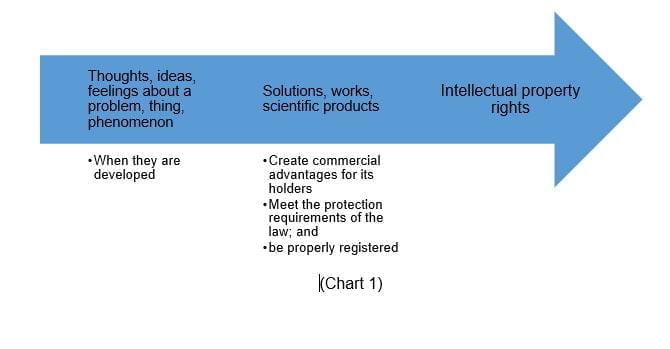Part 1: IDENTIFY INTELLECTUAL PROPERTIES FROM THE PERSPECTIVE OF MANAGING THE CORPORATE
In the context that the fourth industrial revolution (Industry 4.0) is gradually forming and spreading around the globe when technology is one of the pioneering and dominant factors in the economy, no one can deny the importance and value of intellectual property in businesses in particular and the modern economy in general.
However, in Vietnam, maybe except for startups in the technology field, many businesses still take the matter of managing their intellectual properties underestimated. The causes for this issue may partly because the intellectual properties don’t generate immediate benefits for the enterprise, and the other part can come from the reason that business owners and executives have not identified intellectual properties present in their company to take appropriate management measures.
To earn money from intellectual properties, firstly, businessmen must identify what it is, where it exists in their business, then considering how to manage them, and finally to increase the value of these assets and make money from it. In this article, Apolat Legal clarifies basic forms of intellectual property so readers can identify the existing forms of intellectual properties in the enterprise and have a basis for taking the next steps to manage intellectual properties.
Intellectual properties, first and foremost, must be products of human intellectual activity. Thoughts, ideas or even the feelings, emotions…about all things, phenomena, issues in life are primitive products of human intellectual activity. These ideas and feelings do not require the person who created them have to spend much time and effort, therefore, it does not generate profits and be very easy to be shared with others. But when they are invested more effort, such thoughts and ideas gradually become intellectual products, even properties as prescribed by law.

The chart above briefly describes the development process and existing forms of an intellectual product. The potential source of knowledge of an individual is enormous, including but not limited to experience, know-how, technology, creativity, which creates ideas, thoughts, feelings – images by which the primordial representation of intellectual activity in Chart 1. From these primitive intellectual products, through the working and creativity process, people can show those potential pieces of knowledge to the outside through products such as documents, drawings, programs, data, processes Etc. If well exploited, these intellectual products can become intellectual properties and even a type of property legally recognized (intellectual property rights).
The process of creating an intellectual product must go through many steps, in which not every form of this intellectual product is eligible to protect under the law, although it still can be profitable for businesses. And even if these intellectual products are eligible to become a legal asset in accordance with the law, not all businessmen know or pay attention to proceed the registration of protection at the competent state authority to be recognized the intellectual property rights. Therefore, it is very important to identify and manage the intellectual products arising during the operation of the enterprise to turn it into intellectual properties, or furthermore, or may even create goodwill and market value of the business.
As mentioned above, the potential source of knowledge of an individual employees is gigantic, but when it is shown externally through the working process, is shaped in a certain form that the business are able to exploit such as products, statutes, processes, forms, reports, documents on knowledge, know-how, inventions, innovations, etc., enterprises must identify the following issues :
- Can these products bring benefits to businesses?
- Can it be disclosed to the outside or must it be kept secret?
- Does this product have to follow any procedures to become an asset?
From answering the above-mentioned questions, business managers can identify the intellectual property arising in their enterprises and conduct a preliminary classification, then applying appropriate management measures.
The identification of intellectual property in an enterprise is a long-term process and must be done on a regular basis because creative activities and intellectual products always arise during the operation of the business. Managers and owners need to delicated and meticulous enough to recognize and develop them to a new level.
If you have any questions or require any additional information, please contact Apolat Legal – An International Law Firm in Viet Nam.
This article is for general information only and is not a substitute for legal advice.





































